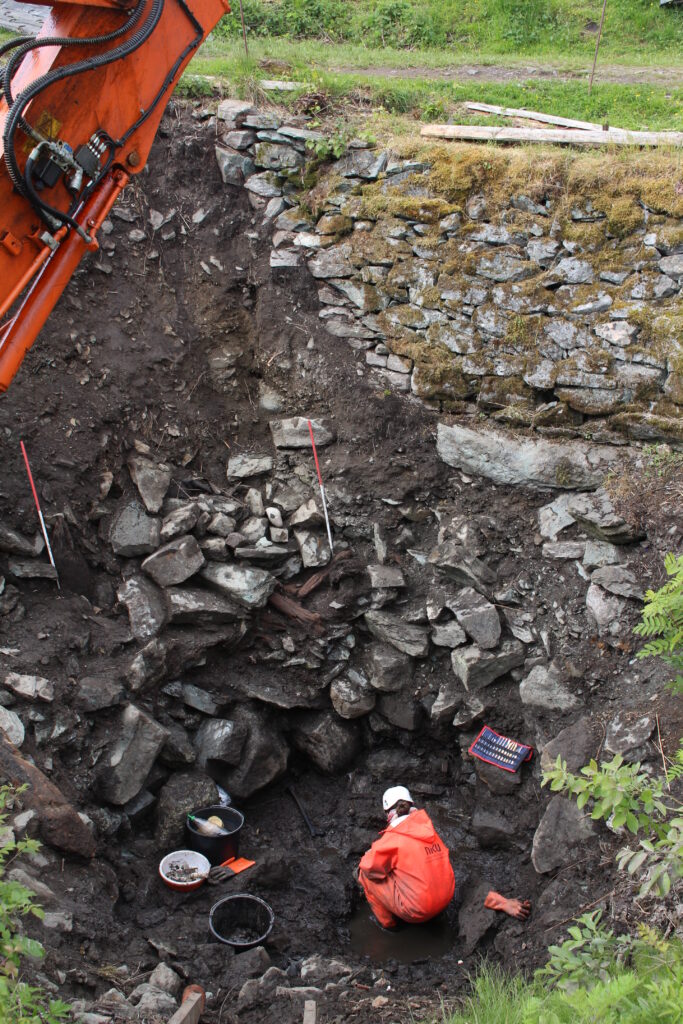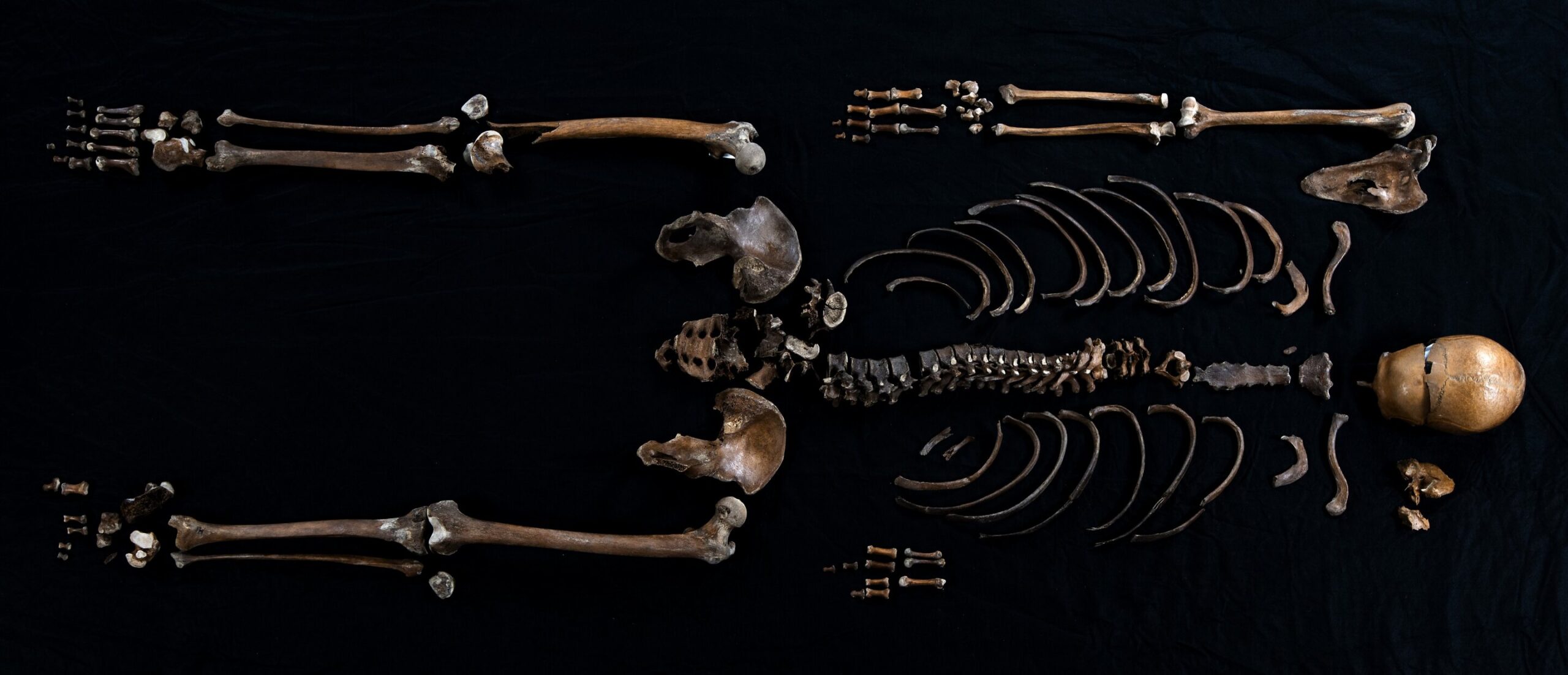In the heart of Norway, beneath the windswept landscape of Trondheim, lies the site of Sverresborg Castle, a medieval stronghold that once echoed with the clamor of kings, soldiers, and the strife of the 12th century. Today, however, it holds more than just remnants of architecture. In 1938, a discovery beneath the castle would unravel an age-old tale told in the Norse Sverris Saga—a story of political intrigue, treachery, and a mysterious figure who met a violent death. A body, dumped into a well during a military raid in AD 1197, was once thought to be a mere relic of this turbulent time. Yet, recent breakthroughs in genetic science have turned this skeletal remains into a time capsule, offering us a living glimpse into the past—one that redefines the intersection of history, archaeology, and cutting-edge science.
In a study published in iScience on October 25, 2023, researchers have used ancient DNA to corroborate the events described in the Sverris Saga, revealing new insights into the “Well-man” and confirming the chilling story of a raid aimed at poisoning a community’s main water source. This blend of historical texts and modern genomics is not only groundbreaking but sets a precedent for future research on historical figures, deepening our understanding of the medieval world.
The “Sverris Saga” and the Mystery of the Well-Man
The Sverris Saga, written over 800 years ago, chronicles the life and reign of King Sverre Sigurdsson of Norway. One particularly vivid episode in the saga recounts a military raid in 1197, during which the body of an unknown man was tossed into the well at Sverresborg Castle. The raid’s goal was clear: to contaminate the water supply and poison the local inhabitants. This gruesome act was a testament to the brutal methods of medieval warfare, where even basic resources like water were not off-limits in the pursuit of power.
But for centuries, this part of the saga remained shrouded in myth and speculation, until the discovery of a set of human remains in the very well described in the saga—remains that, when examined through the lens of modern science, would begin to answer questions about the identity of the “Well-man” and the events of that dark period in history.
The Breakthrough: Ancient DNA and Radiocarbon Dating
In 1938, a set of bones were found in the well at Sverresborg Castle. Yet, at the time, the methods available for studying these remains were limited. Researchers could only offer a rudimentary visual analysis, which failed to yield conclusive results. It wasn’t until the advent of advanced radiocarbon dating and DNA sequencing technology that the story could truly begin to unfold.
Radiocarbon dating confirmed that the bones were approximately 900 years old, aligning with the timeline provided in the saga. However, it wasn’t until later studies conducted in 2014 and 2016 that the gender and age of the individual were definitively established: the body belonged to a man between 30 and 40 years old at the time of his death.
According to Professor Michael D. Martin, of the Norwegian University of Science and Technology’s University Museum in Trondheim, this marks a significant moment in historical archaeology. “This is the first time that a person described in these historical texts has actually been found,” he says. With the help of modern genomic methods, the remains of the “Well-man” have been analyzed in unprecedented detail, offering a deeper understanding of not just who he was but also where he came from.

Sequencing the Genome: A Window into the Past
The breakthrough came when Dr. Martin Rene Ellegaard, working toward his doctoral degree, used samples from a tooth found with the remains of the Well-man to sequence his genome. This genetic information provided a wealth of details about the individual, far beyond what traditional archaeology could reveal.
The sequencing confirmed that the Well-man likely had blue eyes and either blonde or light-brown hair. Additionally, the researchers traced his ancestry to southern Norway, specifically the modern-day Vest-Agder county. This insight into his physical appearance and ancestry was made possible by a collaboration with Professor Agnar Helgason at deCODE Genetics in Iceland, who provided a rich database of genetic reference data from modern-day Norwegians.
For Ellegaard, this was a critical step in advancing genomic archaeology. “Most of the work that we do is reliant on having reference data,” he explains. “The more ancient genomes that we sequence and the more modern individuals that we sequence, the better the analysis will be in the future.” Indeed, the wealth of reference data from contemporary Norwegian genomes enabled a far more accurate picture of the Well-man’s ancestry, shedding light on his origins and allowing researchers to draw connections between the past and the present.
Ethical Challenges and Scientific Limitations
As promising as these technological advancements are, they come with their own set of challenges. To avoid contamination from previous handlers of the tooth—who may have touched it in non-sterile environments—the researchers had to carefully grind the tooth into powder for analysis. This process meant that the outer surface of the tooth, which may have contained valuable genetic material, was sacrificed, limiting the ability to conduct further tests on the remains.
Moreover, the team was unable to analyze any potential pathogens the Well-man might have carried at the time of his death. “It was a compromise between removing surface contamination of the people who have touched the tooth and then removing some of the possible pathogens,” Ellegaard explains. “There are lots of ethical considerations when you’re handling such valuable, irreplaceable samples.”
While this technology opens new doors to understanding the past, it also forces researchers to confront the limitations of their tools. Every step in the analysis process requires balancing scientific discovery with the preservation of ancient evidence, making future tests on the same samples increasingly difficult.
Looking to the Future: Genetic Research and Historical Figures
As the field of ancient DNA continues to evolve, researchers hope to apply these methods to other significant historical figures. “The important Norwegian Saint Olaf is thought to be buried somewhere in Trondheim Cathedral,” says Professor Martin. If the remains of this revered figure were ever uncovered, they could provide the perfect opportunity for similar genetic analyses to trace Saint Olaf’s ancestry and provide more detailed insights into his life and lineage.
In addition, the Well-man’s discovery has sparked interest in testing other medieval remains across Europe. The integration of genomic data with historical texts, archaeologically significant sites, and material culture can offer new insights into the lives of individuals whose stories have been largely forgotten by history.
A New Era in Archaeology
The ability to blend history with science has created a new era of archaeology, one where ancient narratives and modern genetic techniques converge to tell more complete stories. “It’s a fantastic result on what Ellegaard and Martin’s method can bring to archaeology in such a strange or rare context like this is,” says Anna Petersén, an archaeologist at the Norwegian Institute of Cultural Heritage Research.
Through their groundbreaking work, these scientists have not only uncovered details about the Well-man but have also opened the door for a future where ancient DNA will play an integral role in reconstructing the lives and deaths of those who lived centuries ago. The ability to bring historical figures back to life through genetic analysis, along with careful archaeological study, marks a revolutionary step in our understanding of the past.
Conclusion: The Legacy of the Well-Man
The discovery of the Well-man, combined with the use of ancient DNA to bring new clarity to the events described in the Sverris Saga, is more than just a scientific breakthrough—it’s a testament to the growing potential of genetic archaeology. As scientists continue to refine their techniques, the ability to uncover the truths behind historical texts, lost civilizations, and forgotten individuals will only expand. This fusion of the old and new, history and science, is transforming how we perceive our ancestors and their legacies.
In the end, the Well-man’s story is not just one of betrayal and violence; it is a reminder of how the past is never truly gone. Through modern science, we can reach back in time, uncovering secrets buried in the earth, breathing life into long-forgotten figures, and connecting the present to the distant past in ways that were once unimaginable. This is the power of blending history with science—and it is only the beginning.
Reference: Corroborating written history with ancient DNA: the case of the Well-man described in an Old Norse saga, iScience (2024). DOI: 10.1016/j.isci.2024.111076. www.cell.com/iscience/fulltext … 2589-0042(24)02301-0
